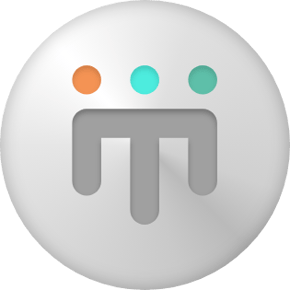It’s not unusual for organisations to keep tabs on employees. Monitoring and surveying employees have been part of organisations for decades.

Truck drivers, the backbone of the Australian economy have been tracked since the invention of the technology. Call centres have monitored calls since the '60s, and banks have managed teller's keystrokes since the ‘70s.
Monitoring and surveying employees ensures accountability and efficiency, and in today’s world, nothing’s changed. We still need to keep employees accountable. However, digital surveillance has taken centre stage because so many employees work from home, and remote work has become the norm.
From monitoring keystrokes to tracking time spent on apps, organisations use digital tools to boost productivity, reduce fraud, and ensure employees do the right thing on the clock. The methods might have evolved, but the underlying purpose remains the same: ensuring the work is getting done. The question for HR is, at what cost? Because many employees aren’t happy about it.

In a recent survey of over 1,000 employees in America from Forbes advisor, 40 per cent report that employer monitoring hurts their relationship with the organisation and 50 per cent say it negatively affects morale.
HR needs to balance trust and accountability in their organisation and safeguard employee privacy, all while navigating legal compliance, surveillance responsibly and ethics, which is no easy feat in Australia because privacy laws differ between states.
What is workplace monitoring?
Organisations monitor employees by monitoring keystrokes, time on work platforms, algorithms that analyse sentiment in emails and chats, webcam monitoring, and wearable devices that track employee devices.
.webp?width=498&height=384&name=giphy%20(58).webp)
The most popular tracking method is active work time, as organisations want to know which employees are the most productive during work hours. Some organisations even take periodic screenshots and conduct email reviews to prevent data breaches or maintain compliance.
While these tools aim to boost productivity, ensure data security, and reduce fraud, they raise critical questions about privacy and trust. Unfortunately, transparency is often lacking as many employees remain unaware of how, when, or why they are being monitored. Only 32 per cent of employees report receiving clear guidelines or policies. This lack of transparency raises questions about employee awareness and consent in these practices.

Your organisation should be okay with employees responding to a friend about a dinner plan or booking a ticket for a show on the weekend. And it’s good to own that up front. The challenge for HR lies in striking a balance, leveraging monitoring tools responsibly while respecting employees’ privacy and maintaining a culture of trust.

If you feel like you’re constantly being watched, it erodes trust. It’s a possible reason for the high increase in job dissatisfaction across corporations.
Why do we need ethics?
Believe it or not, employees have a reasonable right to privacy, even on your organisation's property.
An Australian bank faced backlash a few years ago after it came out they were using software to monitor employees' activities without their consent. The system tracked how long they were at their desks, when they took breaks, and even measured productivity levels based on computer usage. The public didn’t like it, and the bank stopped using the software and issued a statement.
So organisations need to be careful, the erosion of trust can undermine your organisation's culture. When people feel trusted, they’re more likely to excel. However, excessive monitoring can backfire, demotivating employees and causing them to leave.

In Australia, privacy legislation sets boundaries for monitoring practices. Legislation like the Workplace Surveillance Act in NSW requires employers to notify employees of monitoring activities. This includes specifying how and when monitoring will occur. Employers who fail to comply with these regulations risk facing legal consequences, including fines or damages for privacy breaches.
And because workplace monitoring often generates a lot of personally identifiable data, organisations need to keep their data management practices on track. Mishandling or improperly securing this data can lead to a privacy breach, and your organisation doesn’t need an Optus or Canva situation, exposing your organisation to reputational harm.
You need to protect the rights of employees, but more importantly, their dignity while also balancing your organisation.

How to ethically surveillance employees
Be transparent. Be clear about what is being monitored, why it’s necessary, and how the data will be used to manage performance. Define the scope of surveillance in policies and communicate this to employees. Transparency fosters trust and ensures employees understand that the purpose is to enhance safety, productivity, or compliance, not to micromanage.
.webp?width=480&height=290&name=giphy%20(59).webp)
Keep monitoring strictly professional. Focus on metrics directly tied to business activities rather than individual behaviour or private communications. For example, tracking productivity metrics like project timelines or system performance is okay for performance reviews and managing projects, but keystroke monitoring for private messages isn’t.
Education is essential. Provide employees with training and resources explaining monitoring tools' benefits, scope, and limitations. This can help reduce anxieties and align employees with the organisation’s goals. For example, a FAQ about the purpose of monitoring tools can help employees feel informed and less apprehensive.

